Finally – the desired offspring has arrived and needs a lot of sleep in the first few months. However, a sleep cycle lasts an average of 50 minutes in the first three months, and up to five hours from the fourth to the ninth month – if the parents are lucky! In order not to have to pay constant attention to the baby cot, a baby monitor has become a standard first equipment for freshly baked parents. These are now available at very good prices.
A baby monitor consists of two parts: a transmitter and a receiver. The transmitter is placed in the baby’s bedroom, preferably at a distance of one to two metres from the baby. The receiver is located with the parents. The transmitter transmits all sounds from the baby room via a sensitive microphone.
1. Analog vs Digital Baby Monitors – What You Should Know
A key criterion in the decision to purchase a baby monitor is the technology of transmission. The range includes digital baby monitors with high-quality voice quality and the second category, analog devices with few functions and easy operation.
1.1 Digital Baby Monitors
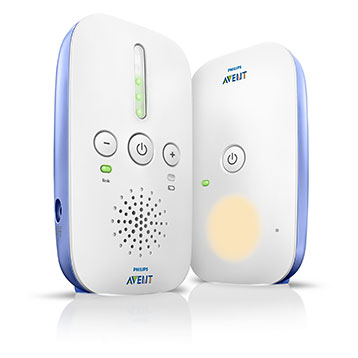
Range and transmission quality: Digital devices enable secure communication that cannot be interrupted by other devices. They offer a longer range than analog baby monitors. Due to the so-called “DECT technology”, the transmission quality is correspondingly high.
Radiation intensity: This is clearly higher with digital devices than with analog ones. If lower radiation is a criterion, you should opt for a digital baby monitor with a low-radiation ECO mode. Devices with ECO mode do not transmit continuously; they are often only in standby mode, which means that they emit significantly fewer signals.
1.2 Analog Baby Monitors
Range and transmission quality: Analog baby monitors are easy to use and have a good price-performance ratio. Devices with a built-in “pilot signal” ensure good transmission. Otherwise it would have to be ensured that the corresponding radio channel is not disturbed.
Radiation intensity: This is reduced to a minimum with analog devices. They operate without continuous transmission and the radio intensity is low. The analog products are a good alternative, since they convince by a good transmission, useful range and simple handling.
2. Is the Radiation Dangerous for the Baby?
For some time now, there has been an increasing uncertainty about eSmog. These are high-frequency microwaves that are generated during the operation of electronic devices. Generally speaking, analog baby monitors produce far less radiation than their digital counterparts.
Digital baby monitors work according to the DECT standard, the “Digital Enhanced Cordless Telecommunications Standard” and generate high-frequency microwaves. In a normal household, many devices use DECT technology. For example, wireless telephones, WiFi routers and smartphones.
What you can do against radiation:
Always make sure that the transmitter unit of the baby monitor is set up at a minimum distance of one meter from the baby. It is also important to have a range control that can be switched off to minimise eSmog. Switching the unit off means that there is no continuous signal exchange between the units and the electromagnetic radio interference is significantly reduced.
Many baby monitors also have some additional methods for minimizing radiation. The most effective is the ECO mode. While the maximum range is minimized, only noises above a threshold value are transmitted to the receiver.
Conclusion: In the test conducted by the German consumer organisation Stiftung Warentest in issue 05/2011, the exact question of radiation was examined. According to the test, modern digital DECT baby monitors were only about 6 percent of the permissible limit of 250 milliwatts one meter away from the child. In comparison, mobile phones in the same frequency range may reach a maximum of 1000 milliwatts. Stiftung Warentest came to the conclusion that there was no cause for concern.
3. Useful Equipment Features
3.1 Breathing Sensor
In infancy, breathing stops are not uncommon and usually harmless: breathing stops often occur during sleep, but do not last longer than 15 seconds. If the baby stops breathing for a longer period of time, great caution is required. This is because respiratory arrest is a possible cause of “sudden infant death” (SID).
Baby monitors register the baby’s breathing movements by means of highly sensitive sensor pads that are placed under the mattress in the cot. The baby’s breathing movements can thus be monitored and transmitted to the parents. If the baby monitor registers no breathing for more than 15 to 20 seconds, it immediately sounds the alarm.
3.2 Camera
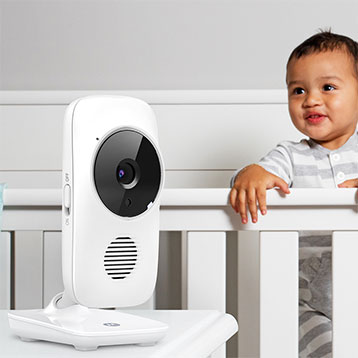
A camera in the baby monitor transmits not only the baby’s sounds but also a live image of the child. A proven infrared technology is used, which enables video image monitoring even in almost complete darkness. Using digital transmission (such as FHSS radio technology), the images are sent from the transmitting unit to the receiving unit.
The parent unit (receiver) is equipped with a state-of-the-art LCD colour screen. The live video transmitted by the baby unit is shown on this display. In the dark, the camera automatically switches on the infrared light emitting diodes. Since infrared light is invisible to the human eye, the baby is not disturbed in its sleep.
3.3 Talk Back Function
The familiar sound of the parent’s voice often helps to calm the baby. Some devices are equipped with an talk back function for the purpose of mutual communication. This is started by pressing a TALK button. Then you speak into the microphone integrated in the parent unit and the voice is transmitted to the stationary baby unit.
3.4 Lullabies
Some devices even have different sleep melodies integrated into the baby unit. These can be selected and started via the baby unit or the mobile parent unit. Some baby monitors have an MP3 upload function, which can be used to upload lullabies to the baby monitor, which the baby should hear to help it fall asleep more quickly.
3.5 Range
The range of the baby monitor is certainly an important criterion. In most cases, the manufacturer’s information on the range should be taken with caution. The actual distance in practice is usually much shorter.
3.6 Batteries
Many devices can also be operated with batteries. If there is a power failure, the unit automatically switches to battery operation and continuous monitoring of the baby is guaranteed.
3.7 Night Light
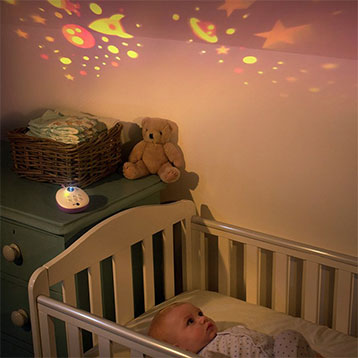
An integrated night light in the baby unit is also practical for better orientation at night. Most of these devices are also equipped with different calming ceiling projections.
3.8 Temperature Display
For a quiet and restful sleep of a baby, the ideal room temperature is between 16°C and 20°C. Therefore, some baby monitor models offer an integrated temperature display as a useful additional function. A temperature sensor on the baby unit determines the temperature in the nursery and transmits it to the parent unit.
3.9 Sound Quality
The sound quality ensures that the baby can hear the parents well and vice versa. The decisive factor in this respect is the microphone sensitivity, which you should pay attention to when buying a baby monitor.
4. What Range Does a Baby Monitor Offer in Everyday Life?
The various providers like to advertise with ranges of up to 330 metres. That this usually does not work, should be clear to most. In order to reach these ranges, it needs above all free view to the transmitting equipment under free sky. It should also be clear that this is not the case within their own four walls.
In apartments, for example, Philips specifies ranges of up to 50 meters for its Avent series. Whereby also here no blanket statement can be made. The range depends largely on the number of walls between the receiver and the transmitter. There are also differences in the materials of the walls. Thus the transmitting power is smaller with solid reinforced concrete walls than with wood or gypsum.
Conclusion: Basically, the range in apartments up to 150 m² should not be a problem. The whole looks different when you go to your neighbors for coffee. Here should be tested in advance whether the receipt is sufficient or not.
5. Well-Known Manufacturers
5.1 Philips Avent
Philips, a Dutch company founded in 1891, offers numerous products for babies and children under the Avent series. In addition to classic audio and video models, Philips is increasingly offering smart solutions for the networked household. Many of the models are absolute blockbusters.
5.2 NUK
The NUK brand was founded in 1956 by Mapa GmbH. Under the slogan: “Understand children. From birth to kindergarten”, the company also successfully sells baby monitors. NUK products are very popular and have already achieved numerous test wins.

5.3 Angelcare
Angelcare was founded in 1997 by the Canadian father Maurice Pinsonnault. Today, the brand is sold in over 50 countries around the world. Angelcare attaches particular importance to the ecological aspect. Together with a German eSmog expert, the products are specially tailored to customers in Germany, Austria, Switzerland and the UK.
5.4 Reer
Reer is a traditional Swabian brand that has existed for 90 years. Under the mission “More safety for children”, the company also sells baby monitors and other products related to children’s well-being. In addition to classic analog baby monitors, the portfolio also includes digital audio and video devices.
6. Frequently Asked Questions (FAQ)
Up to What Age Should a Baby Monitor Be Used?
This cannot be answered in such a general way. Many parents use the devices up to the age of 2 to 4 years. Afterwards, the children usually go to the parents’ bed alone instead of staying in the cot. Even at a slightly higher age, when your child is ill, for example, you can confidently use a baby monitor. However, a withdrawal should take place at the appropriate time.
How Far Away Should the Receiver Be From the Baby?
In principle, the transmitter unit should not be placed too close to the child in order to keep the radiation exposure as low as possible. Simply test different positions and decide whether the volume or sensitivity of the device is sufficient. If the baby monitor has to be placed in the immediate vicinity of the bed, the device should preferably be placed at the foot end. The manual of the respective manufacturer is also helpful in most cases.
Disturbing Noises on the Baby Monitor – What to Do?
This can have many causes. If an analog baby monitor is used, it is often sufficient to change the channel. Noise can occur when neighbours or other devices use the same frequency. But also a technical defect cannot be excluded. If the device emits noise immediately after purchase, it is advisable to exchange it. Noise can also occur in the vicinity of TVs, computers or other electrical devices. A different or better positioning is usually sufficient here.
Can the Baby Monitor Also Be Used by Seniors?
Of course. Where and how the baby monitor is used is up to you. In many cases, the classic baby monitor is also suitable for seniors or people in need of care.
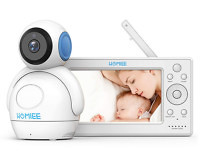
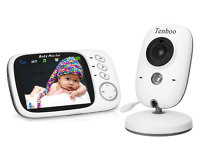
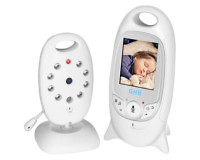
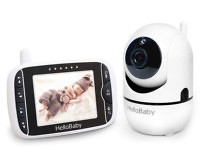
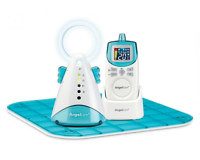
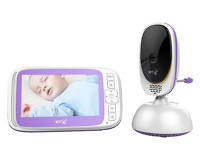
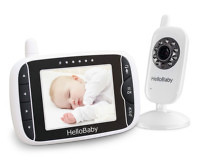
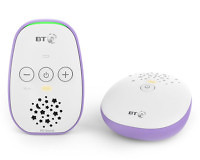
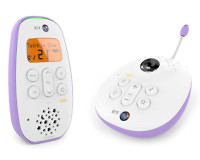
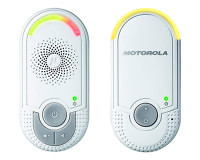
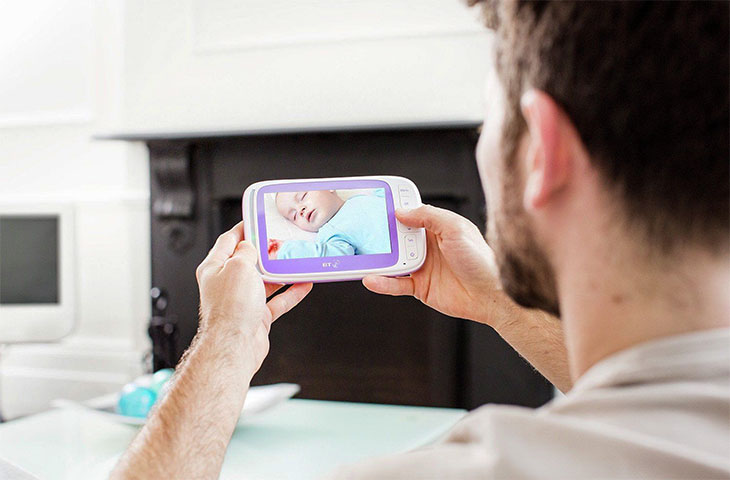

 (8)
(8)